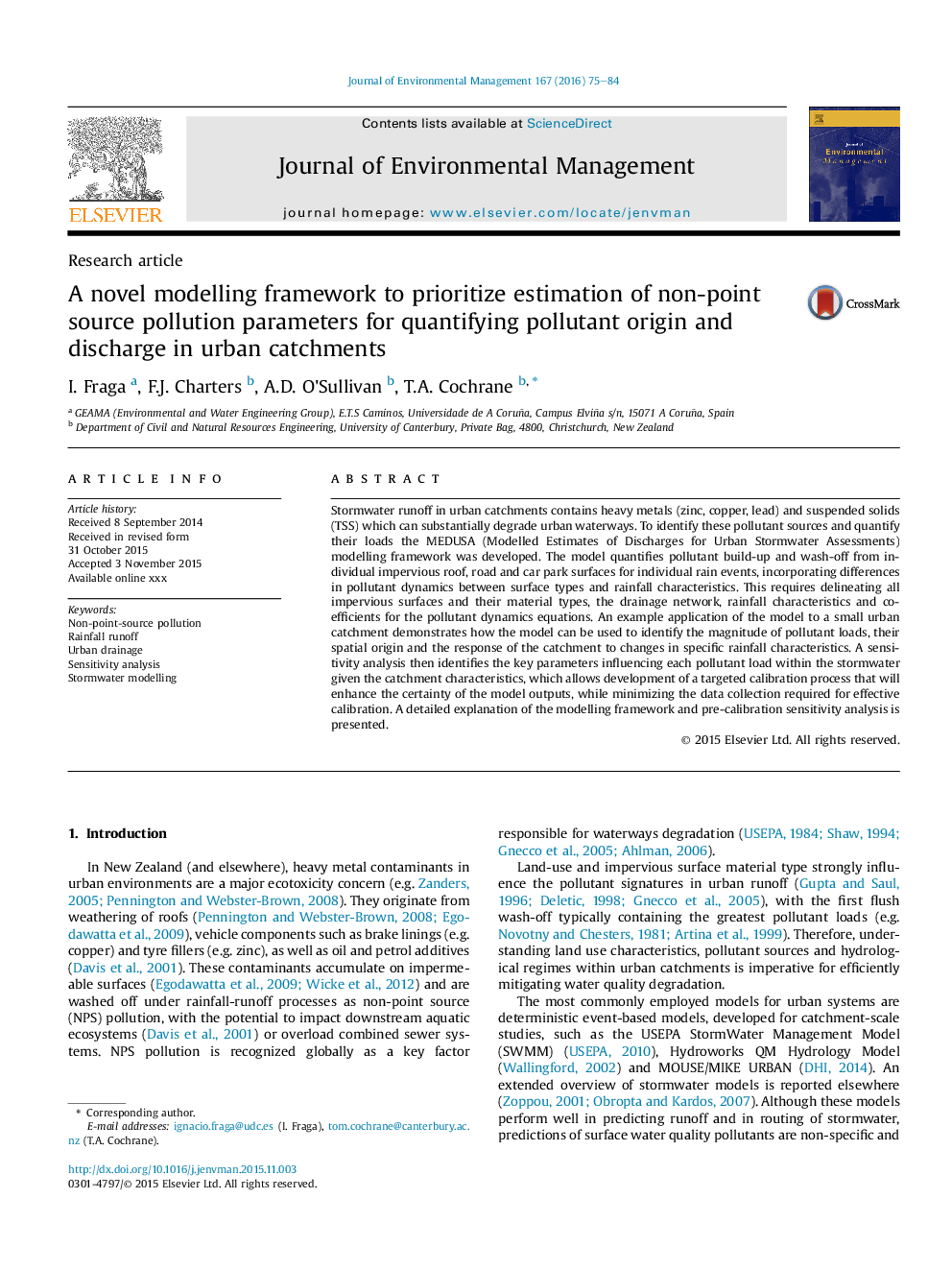| Article ID | Journal | Published Year | Pages | File Type |
|---|---|---|---|---|
| 7481176 | Journal of Environmental Management | 2016 | 10 Pages |
Abstract
Stormwater runoff in urban catchments contains heavy metals (zinc, copper, lead) and suspended solids (TSS) which can substantially degrade urban waterways. To identify these pollutant sources and quantify their loads the MEDUSA (Modelled Estimates of Discharges for Urban Stormwater Assessments) modelling framework was developed. The model quantifies pollutant build-up and wash-off from individual impervious roof, road and car park surfaces for individual rain events, incorporating differences in pollutant dynamics between surface types and rainfall characteristics. This requires delineating all impervious surfaces and their material types, the drainage network, rainfall characteristics and coefficients for the pollutant dynamics equations. An example application of the model to a small urban catchment demonstrates how the model can be used to identify the magnitude of pollutant loads, their spatial origin and the response of the catchment to changes in specific rainfall characteristics. A sensitivity analysis then identifies the key parameters influencing each pollutant load within the stormwater given the catchment characteristics, which allows development of a targeted calibration process that will enhance the certainty of the model outputs, while minimizing the data collection required for effective calibration. A detailed explanation of the modelling framework and pre-calibration sensitivity analysis is presented.
Related Topics
Physical Sciences and Engineering
Energy
Renewable Energy, Sustainability and the Environment
Authors
I. Fraga, F.J. Charters, A.D. O'Sullivan, T.A. Cochrane,
